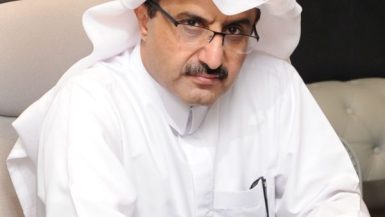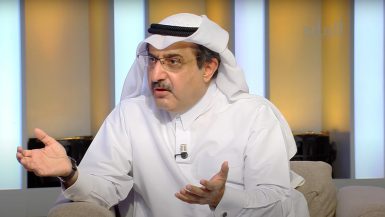
Recently the concept of “public diplomacy” has come up more frequently in media, politics and academia. However, it is still unclear exactly how we define this concept. For example, why do we call this particular type of diplomacy “public”? What makes public diplomacy different from more traditional “official diplomacy”? Is there a reason that official diplomats are not in charge of this new kind of diplomacy? These questions do have answers, but it is difficult to determine how well they have been explained to the general public as well as to (and even by) experts in international politics.
Not long ago, before “public diplomacy” became a common term, it was often used interchangeably with “cultural diplomacy,” another ambiguous phrase. It was unclear even then what separated “cultural diplomacy” from “cultural exchange,” and there were questions over whether the work of introducing Korean culture abroad was the responsibility of the Ministry of Foreign Affairs or the Ministry of Culture. If this job did belong to the foreign ministry, it became more important than ever to identify what the actual goal of this diplomatic work might be.
I had the opportunity recently to visit Washington, D.C., for a face-to-face meeting with members of major think tanks on par with the Brookings Institute. During our discussion, it quickly became clear that the concept of public diplomacy was still relatively unfamiliar even to these top researchers. It seems that the term has not yet been popularized in the United States despite the fact that it was originally created there. As an organizer of the 2019 Public Diplomacy Week (held this past October at Dongdaemun Design Plaza), we at the Korea Foundation thought it would be appropriate to try and help our citizens more clearly understand what exactly public diplomacy is and how it is accomplished.
The Korean government first demonstrated its commitment to what we now call public diplomacy through a law enacted in February 2016. This involved the creation of a new position (Ambassador of Public Diplomacy), the establishment of the foreign affairs ministry’s Public Diplomacy Division, and the appointment of the Korea Foundation as Korea’s only officially designated public diplomacy agency. According to this law, public diplomacy covers any diplomatic activities that increase foreign citizens’ understanding of and trust in Korea. This includes cultural, intellectual and policy-based efforts made by the national government, either on its own or working together with local governments or private actors. What this means is that the state ― in the form of diplomats, politicians and other civil servants ― is not the only entity that can practice public diplomacy. Local governments and private actors can and do also actively participate. In fact, in certain cases, private actors can take the lead in public diplomacy efforts, with state or local government in a supporting role.
The overall goal of public diplomacy is, of course, to effectively communicate to our major partner countries what kind of place Korea is and what policies our current government is pursuing, as well as to raise the international profile of Korea’s various charms. To use another concept that has been gaining traction these days, this is a way to emphasize Korea’s “soft power” on the international stage. The most direct method of accomplishing this is to use the “soft resources” at our disposal (our cultural, intellectual and policy-based tools) to enhance public opinion of Korea in our partner countries and the international community as a whole. We can therefore understand that the “public” part of “public diplomacy” is not meant to be the opposite of “private,” but is used instead as it is in phrases such as “general public” or “public opinion.” Seen from this perspective, it becomes easier to understand the difference between public diplomacy and the official diplomacy most commonly practiced by diplomats and state officials.
In other words, a range of actions taken by the government, the people or a combination of these two groups, designed to boost positive public sentiment toward our country in major partner countries and in the international community: this is the definition of public diplomacy.
In many ways, the Korea Foundation’s Public Diplomacy Week can be understood as a package deal showcasing a wide variety of possible public diplomacy activities. While this event was organized by the Korea Foundation, its participants included members of the National Assembly and the foreign ministry, officials from various local governments, representatives from foreign embassies based in Korea, scholars, journalists, artists and regular citizens: a broad collection of the public and the private. Over the course of the event, it was possible to see the impressive international cultural impact of K-pop, as well as of Korea’s many other cultural attractions: public diplomacy soft resources and assets produced by Korean artists and scholars. Public Diplomacy Week included separate sessions on a range of topics, not limited to K-pop and BTS but including a session on the power of Korean cuisine and another about public diplomacy via animal companions. The success of these sessions demonstrated the many ways we can emphasize Korea’s soft power over hard power, highlighting how effective these public diplomacy techniques can be.
More than in other diplomatic approaches, the techniques of public diplomacy must change along with the changing times and changing environment. When we consider this in light of the fact that the so-called Fourth Industrial Revolution literally revolutionizes our ways of living, we can see how events like Public Diplomacy Week are invaluable opportunities to observe which kinds of public diplomacy are best suited to keep pace.
Another major purpose of this fall’s Public Diplomacy Week was to provide Korean citizens with an opportunity to learn more about the cultures of other countries. To achieve this goal, each foreign embassy based in Korea had a separately installed booth dedicated to introducing their own culture, history and policies. One way to understand this is to see it as an opportunity for foreign embassies to carry out their own public diplomacy practices in Korea. At the same time, providing this opportunity to our partner nations serves as an act of Korean public diplomacy as well. This is because actively seeking to improve our own understanding and goodwill toward other countries reflects positively on Korea, building understanding and goodwill toward us in return. Or perhaps more simply, when two groups have clearly mutual goals of building understanding and goodwill, communication is more effective. Indeed, unilateral public diplomacy can even have the opposite effect, leaving a negative impression. Emphasizing our active efforts to better understand and accept the cultural offerings of partner nations gives us a chance to put our best foot forward in the eyes of these nations and their diplomatic representatives.
Today, as issues of war and peace are increasingly delegated to a relatively small number of specialized professional diplomats, we can consider the true heart of diplomatic exchange to be wrapped up in this relatively new concept of public diplomacy. After all, it is public diplomacy that has been shown to effectively improve relations with our allies, building positive sentiment toward our country abroad as the world grows more and more into a “global village.” Indeed, there is little doubt that the kind of public diplomacy we pursue at the Korea Foundation ― with the help of diverse supporting actors ― will only become more relevant and important as we all move forward into the future.




